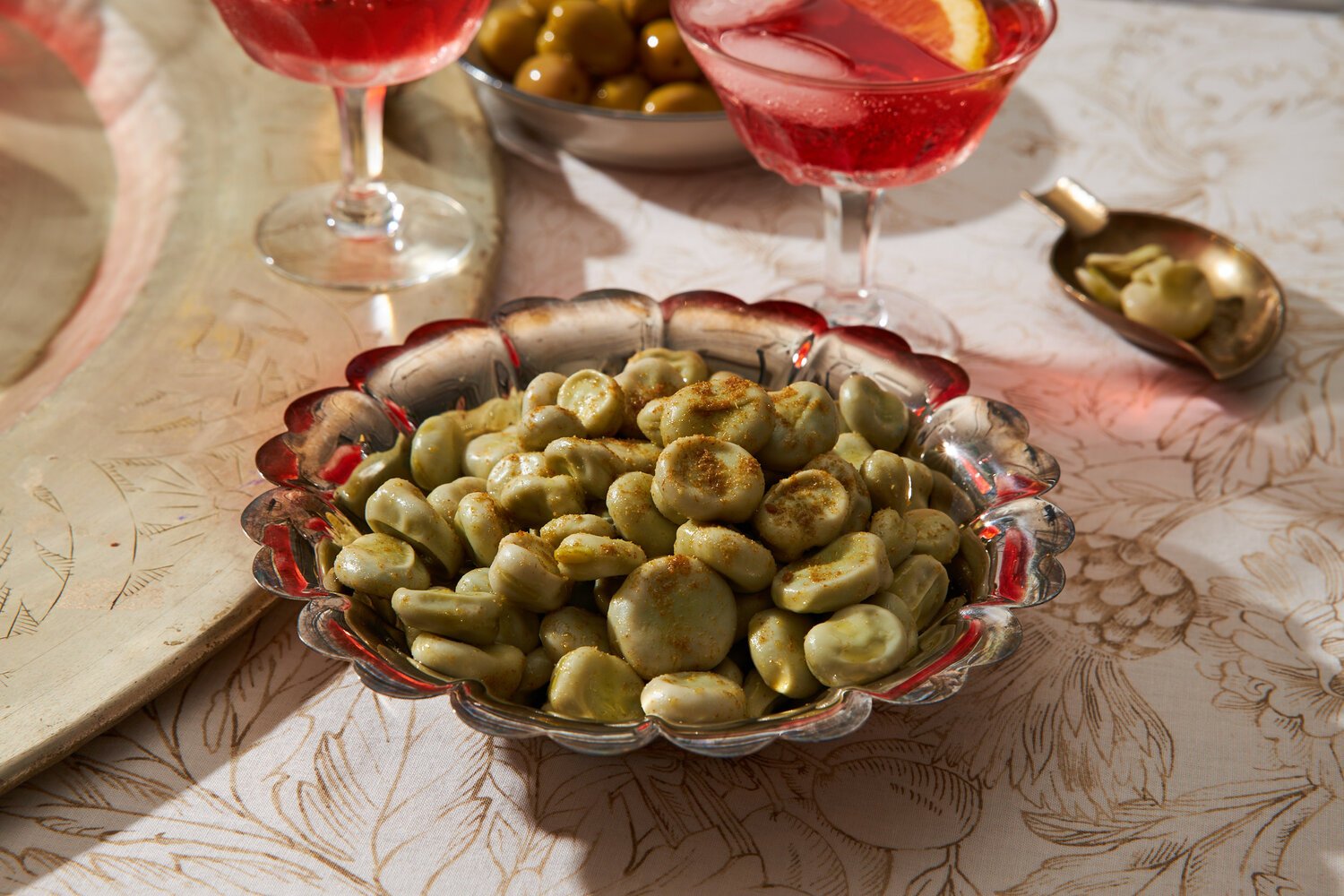My mother’s Moroccan aperitif tradition
The Jewish Food Society honored my culinary heritage with a feature telling the story of my family's recipe history. It seems as though cooking is an innate ability in the Bensimon and Benhayoun families. Every week, our Friday Shabbat dinner table was filled with a variety of food to accommodate everyone's preferences and dietary restrictions -- so much food that the tablecloth was barely noticeable and by the end of the dinner, heavily stained. Many Jewish homes have similar stories and can recount their most memorable dishes - in our home we had several weekly staples such as Moroccan fish, potato borekas, and harissa carrot salad. What made our Shabbat different was the French inspired hour long (or longer) aperitif dining prior to the main meal. My mom would set up an array of foods on our coffee table where we would mingle as guests would continuously join. We would move to the main dining table upon the last guests arrival. It was just the beginning of a heavy food coma and we would often hear "I didn't eat ALL day because I knew I was coming to your house."
Here's a little snippet from the article...
“My mom was the queen of aperitif,” says Joanna Bensimon, owner of The Hamsa Brand, a harissa company. “Every single Friday, no matter what,” their coffee table in Queens, New York was covered with glasses of cognac, whiskey, red wine, and Campari and elegant linen napkins. To snack, there were fava beans tossed in salt and cumin, crisp and golden beef cigars with harissa, potato-filled triangles called pastels, cocktail nuts, pickles, and harissa.
Read the full article here - Photos by Penny de los Santos - June 2021
Scroll down for my family's original harissa recipe that inspired The Hamsa Brand Harissa Hot Sauce.
Ful bel’ kamun - broad beans with cumin
Shopping List
1 bag dried broad beans or large brown fava beans
Cumin
Salt
Recipe
Use ½ pack of dried broad beans/large brown fava beans with the skin.
Quick version: bring a pot of water to a boil with two lemon wedges and salt. Add in the beans and simmer for about 40 minutes or until tender. Keep them in the water until they’re ready to be served. Once ready, remove from water and add a tablespoon of cumin and salt and mix together. Best served hot.
Place a bowl on the side as the outer bean shells will be discarded and only the soft inner bean will be eaten.
Long version: Soak the beans for 8 hours or overnight and then follow the above recipe, reducing the simmering time by about half.
Ora’s Harissa family recipe
Shopping list
4 oz of dried chilis (she would mix a variety of whatever was available including: ancho, guajillo, mora)
6 dried chili de arbol (add more or less depending on the heat level you like but 6 will be spicy)
Fresh garlic
Cumin
Olive oil
Recipe
Soak dried chili peppers in a pot with warm water for 1 hour to reconstitute them. The variety and ratio of peppers depends on the heat level you want to achieve. Ora uses a small quantity of chili de arbol which are small and fiery and a mix of guajillo and ancho which are a bit sweeter and earthy in nature.
Strain the peppers and remove the seeds and stems which is the labor intensive part of the process. Allow the peppers to dry and then process through a meat grinder (or a food processor to save a lot of time). Do the same with 6 large garlic cloves and you’ll begin to see a paste forming.
In a large mixing bowl, add the paste with equal parts cumin and salt and mix thoroughly. Add the harissa into sterile glass jars with ½ cup of olive oil to preserve. The harissa can last several months in the refrigerator.



